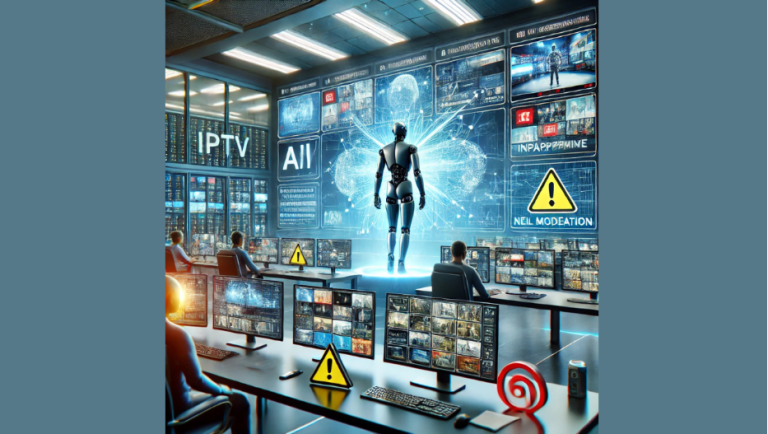Power of Employee Training Software in Modern Organizations
Introduction: Transforming Workforce Development
In today’s fast-paced digital economy, the success of any organization relies heavily on the skills, efficiency, and adaptability of its workforce. Continuous learning and upskilling have become vital for staying competitive. Traditional training methods—often involving classroom sessions and static materials—are no longer sufficient to meet the demands of modern businesses.
This is where employee training software steps in, offering a powerful, flexible, and scalable solution to streamline employee development and ensure long-term success.
Also Read: How to Make Money Online With Microworkers: Easy Tips
By leveraging digital technology, companies can now train, track, and engage their teams more effectively than ever before, helping employees learn at their own pace while aligning with business objectives.
Understanding Employee Training Software
Employee training software is a digital platform designed to deliver, manage, and track learning and development programs within an organization. It allows HR departments, managers, and trainers to create interactive learning experiences that are accessible anytime, anywhere.
This software often integrates features such as:
· Learning Management Systems (LMS): Centralized platforms where employees can access training modules, quizzes, and progress reports.
· Content Creation Tools: To design custom courses using multimedia such as videos, PDFs, and presentations.
· Assessment and Feedback Systems: Tools that help evaluate employees’ progress through quizzes, assignments, and performance analytics.
· Reporting Dashboards: Real-time analytics to monitor engagement, completion rates, and skill improvements.
· Mobile Compatibility: Allowing employees to learn on the go, improving accessibility and engagement.
The best solutions combine ease of use, customization, and automation—helping businesses save time while improving overall training outcomes.
Why Businesses Need Employee Training Software
Organizations across industries are realizing the immense value of implementing digital learning tools. Here are the key reasons why:
1. Improved Learning Efficiency
Unlike traditional training sessions that require physical presence, employee training software allows learners to access materials anytime. This flexibility boosts productivity and ensures training does not interfere with work schedules.
2. Consistent Training Delivery
Every employee receives the same quality of content, ensuring consistency across departments and locations. This standardization helps maintain company culture and compliance requirements.
3. Data-Driven Insights
Training administrators can easily track learner progress, identify knowledge gaps, and analyze performance metrics. This data helps refine future training strategies for better outcomes.
4. Cost and Time Savings
Eliminating the need for physical materials, travel, and in-person trainers significantly reduces costs. Automation further streamlines administrative work such as grading and certification.
5. Increased Employee Engagement
Modern training platforms incorporate gamification, badges, leaderboards, and progress tracking—turning learning into an engaging and motivating experience for employees.
6. Scalable for Growing Teams
As a company expands, onboarding and upskilling new employees can become a challenge. Training software provides an easily scalable solution, enabling organizations to maintain training quality across growth phases.
Key Features to Look For
When selecting the right training solution, organizations should consider the following essential features:
1. Intuitive User Interface
The platform should be user-friendly for both learners and administrators. Complicated dashboards can discourage participation.
2. Course Customization
Every company has unique goals and workflows. The software should allow for custom course creation aligned with organizational objectives.
3. Automation Capabilities
Automation simplifies repetitive tasks such as enrollments, reminders, and certifications, saving valuable time.
4. Progress Tracking
A comprehensive analytics system that tracks performance metrics ensures transparency and accountability.
5. Mobile Learning Support
A responsive, mobile-friendly design enables employees to complete training modules from any device.
6. Integration with Existing Systems
The best solutions integrate seamlessly with HR software, project management tools, and communication platforms.
7. Security and Compliance
Data protection is crucial, especially when handling employee information. Look for platforms that comply with data security standards like GDPR or ISO.
Benefits of Implementing Employee Training Software
1. Faster Onboarding
New hires can access structured onboarding programs that cover company policies, procedures, and role-specific skills. This ensures they become productive members of the team faster.
2. Continuous Learning Culture
Employee training software promotes ongoing education, encouraging staff to continually improve and stay current with industry developments.
3. Enhanced Productivity
By improving employee skills and confidence, overall efficiency and performance increase across the organization.
4. Knowledge Retention
Digital tools that include interactive learning and micro-learning techniques help employees retain information more effectively than passive lectures or reading materials.
5. Better Compliance Training
For industries with strict compliance requirements—such as healthcare, finance, or manufacturing—employee training software simplifies the process of ensuring all staff meet mandatory training standards.
6. Performance Measurement
Real-time reporting helps managers identify skill gaps, track completion rates, and measure the effectiveness of training programs.
How to Successfully Implement Employee Training Software
Adopting a new digital learning system can be a game-changer, but success depends on strategic implementation. Here’s how to do it right:
1. Define Clear Objectives
Start by identifying what you want to achieve—whether it’s improving onboarding, boosting productivity, or enhancing compliance training.
2. Involve Key Stakeholders
Engage department heads, HR, and IT teams early in the process to ensure alignment and smooth integration.
3. Choose the Right Platform
Select a solution that fits your organization’s size, goals, and technical capacity. Test demos before making a final decision.
4. Develop Engaging Content
Avoid text-heavy content. Incorporate visuals, interactive quizzes, and videos to make learning enjoyable.
5. Encourage Employee Participation
Promote the program internally through communication campaigns and incentives. Make learning a core part of the company culture.
6. Monitor and Optimize
Continuously evaluate feedback and data to improve course materials, learning paths, and delivery methods.
Real-World Impact: Empowering Teams for the Future
Companies that have embraced digital training solutions report notable improvements in employee engagement, retention, and productivity. For instance, remote teams benefit from flexibility, while hybrid organizations maintain consistent learning experiences across physical and digital spaces.
As industries evolve with technological advancements, reskilling and upskilling employees become not just an advantage but a necessity. Training software ensures your team stays prepared for the challenges of tomorrow, from adapting to AI-driven tools to mastering new business systems.
The Future of Employee Learning
The future of employee training lies in personalization and automation. Artificial Intelligence (AI) and Machine Learning (ML) are being integrated into modern training platforms to create adaptive learning paths tailored to each employee’s strengths and weaknesses.
Gamified learning, virtual reality (VR), and augmented reality (AR) are also reshaping how employees learn by providing immersive and interactive experiences. These innovations enhance engagement and allow employees to apply skills in realistic simulations before implementing them in real-life scenarios.
In short, the evolution of digital learning is transforming organizations into smarter, more adaptable entities where continuous growth is part of the DNA.
Choosing the Best Solution for Your Business
When it comes to selecting a platform, prioritize usability, scalability, and customer support. One such robust and user-friendly solution is employee training software by GetKnowApp. It offers a comprehensive suite of features designed to simplify employee development, streamline training management, and enhance engagement across all departments.
Whether you’re a small business or a large enterprise, this software provides the flexibility and functionality needed to build a culture of learning and innovation.
Conclusion: Building Smarter Workforces Through Digital Learning
Employee training is no longer an occasional task—it’s a continuous process that determines a company’s success in the digital age. With employee training software, organizations can deliver engaging, personalized, and efficient learning experiences that empower their workforce to excel.
By embracing technology-driven training, businesses not only future-proof their teams but also create an environment of innovation, collaboration, and growth. The right software becomes more than just a tool—it becomes the backbone of a learning-oriented organization ready to thrive in a competitive marketplace.







